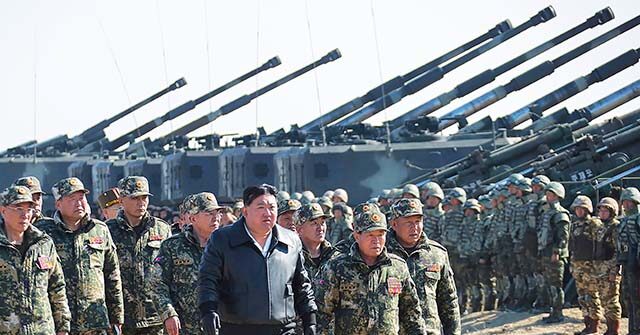In recent developments, North Korean dictator Kim Jong-un conducted an inspection of the country’s nuclear-capable missiles, signaling Pyongyang’s readiness to respond to what it perceives as an “ever-increasing threat” from the United States. State media, including the Rodong Sinmun, showcased images of Kim at a strategic missile base, flanking sizable warheads. This inspection is viewed as an intimidation tactic directed at South Korea and its allies, particularly amid reports of North Korea potentially deploying troops to assist Russia in its ongoing conflict in Ukraine. South Korea’s National Intelligence Service has indicated that North Korea may send up to 12,000 troops to Ukraine, with Ukrainian officials providing video evidence of North Korean soldiers awaiting military gear from Russia—a claim substantiated by recent Pentagon intelligence.
Despite these assertive moves, both North Korea and Russia have denied any troop deployments, labeling allegations as “groundless” and intended to tarnish Pyongyang’s reputation. This denial follows a mutual defense agreement between Kim and Russian President Vladimir Putin, solidified during Putin’s July visit to North Korea. In response to these developments, South Korea has hinted at potentially aiding Ukraine in its war effort, raising international fears about the possible escalation of conflict in the region.
The Korean Central News Agency reported that Kim’s inspection also focused on the functions and capabilities of launch-related facilities, underscoring North Korea’s commitment to maintaining a robust strategic deterrent. Kim accused the United States of posing a growing threat to North Korea’s security, asserting that the peril necessitates an enhancement of the country’s nuclear forces. Interestingly, the U.S. government’s response has largely been one of indifference towards the rising tensions, aside from monitoring the situation concerning the Ukraine war. Notably, North Korea has ramped up provocations against South Korea, including launching numerous balloons filled with waste across the border.
Heightened rhetoric from the North Korean regime has further fueled tensions, with Kim Jong-un’s sister, Kim Yo-jong, delivering a stark warning regarding potential military actions against a nuclear state. She condemned any military aggression towards North Korea as an act of folly that could lead to catastrophic outcomes. Her statements reflect a broader narrative within North Korea’s propaganda, positioning itself as a victim of American military aggression and portraying both South Korea and Ukraine as puppets of U.S. policy.
South Korea has continued to vocally support Ukraine in its conflict with Russia, proposing that it might implement “phased measures” in response to North Korea’s military interactions with Russia. The South has expressed a firm stance against illegal military cooperation between North Korea and Russia, hinting at potential defensive arms supplies and even offensive measures if necessary. Concurrently, some voices within Ukraine appear to welcome South Korea’s support, suggesting that South Korean forces could take action against the North to alleviate the ongoing tensions stemming from the Korean War.
While these discussions and military posturing progress, the situation remains precarious. South Korea’s contemplation of increased cooperation with Ukraine and possible responses to North Korean military maneuvers highlight the complex interconnectedness of regional and global geopolitics. As tensions mount, the international community watches closely, considering the implications of North Korea’s military readiness and intentions alongside its relationships with other global powers, especially in the context of the ongoing conflict in Ukraine. The potential for escalation is profound, as military alliances and historic grievances shape the actions and responses of both North Korea and its adversaries.

